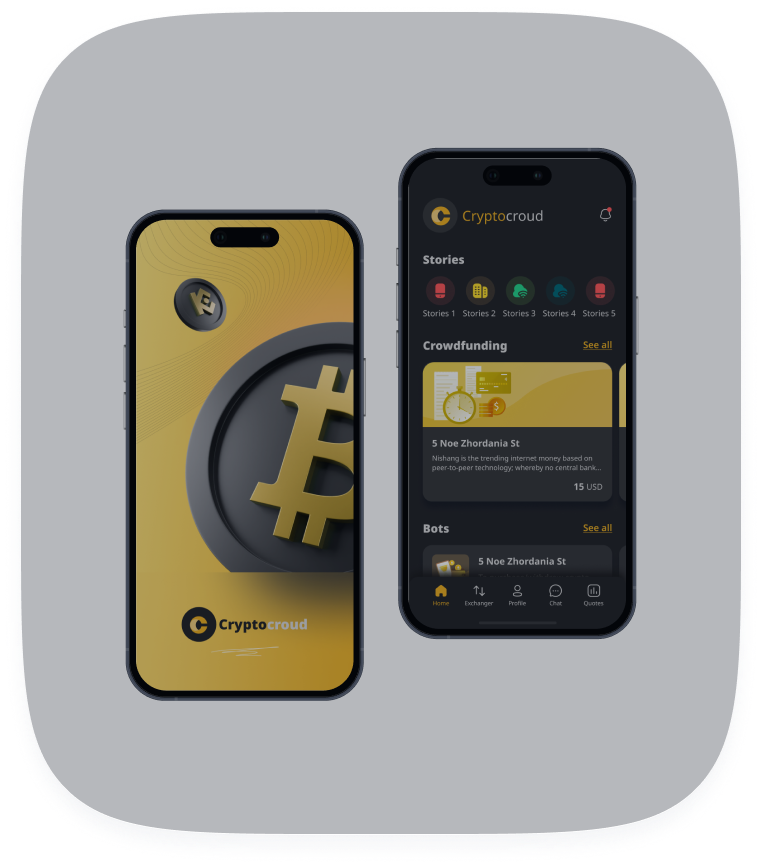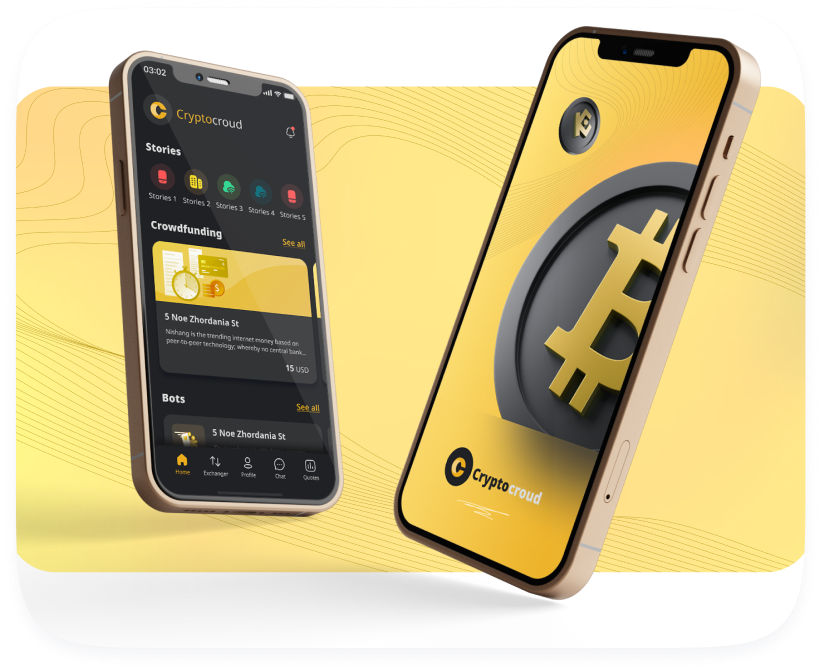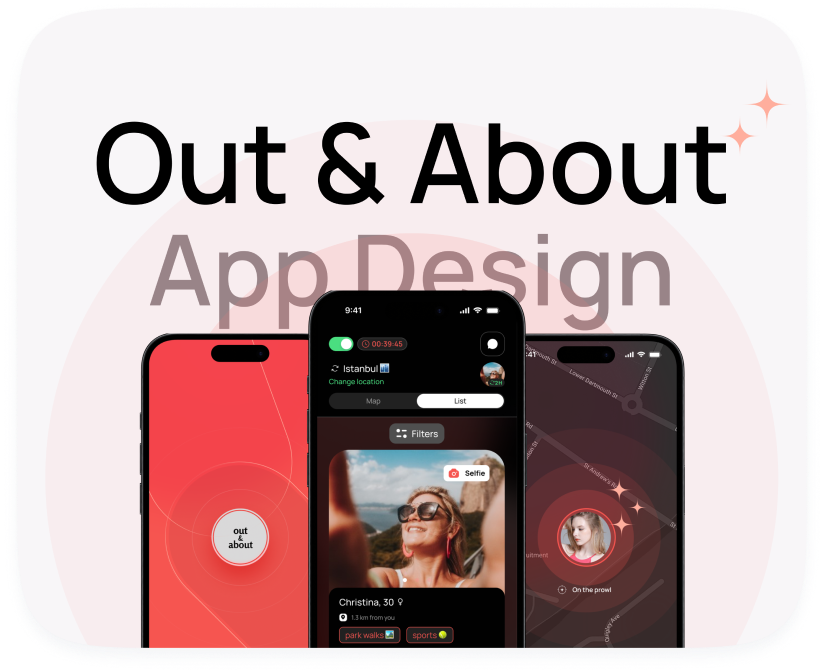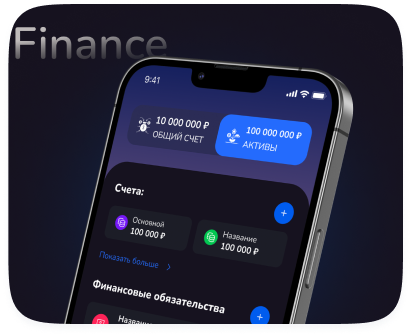
We build mobile apps





We work directly with every client
We deliver solutions with guaranteed results.

We build mobile apps






















It’s similar to buying a car at a dealership: you can go with the basic model, or choose a fully loaded version — it all depends on your needs and goals.

How to create YOUR OWN ChatGPT?

How to PROPERLY create a mobile app in 2024 | Step by step

You pay > We work > You receive the results. If you’re satisfied, you pay the next installment.
We need to have a call and discuss your specific requirements.
One thing we can say for sure: projects under 500,000 rubles are not feasible — we can’t deliver the required quality for less.
We launch, gather user feedback, and add new features that help you earn more from the app.
During development, I always design the architecture to make future updates and improvements easy and convenient.
Some apps perform better with influencer marketing, others through ad networks, and sometimes it’s even effective to buy a contact list and set up retargeting 😊
It all depends on your project’s specifics and is discussed personally.
How we can help:
- Set up ASO (App Store Optimization) and create an attractive app store page to drive free, organic installs.
- Help you develop the right promotion strategy tailored to your app.
- Share contacts of advertising experts I personally work with.
Спросить ChatGPT
The only ongoing cost is paying for the server (hosting).
You pay a subscription fee for the server. The more users your app has, the more server resources it consumes, and the higher the hosting costs.
At the early stages, when you have few users, the server will be FREE.
After that, the cost will gradually increase, but it remains affordable.
For example, an app with 100,000 users spent about $150 per month on hosting.
Custom App Development Cost: A Guide to Pricing Your Idea
Developing a custom app can be a game-changer for your business, but understanding the associated costs is crucial for successful planning and execution. This comprehensive guide breaks down the various factors that influence the price of custom app development, helping you budget effectively and avoid unexpected expenses.
Introduction: Navigating the App Development Cost Landscape
In today's digital age, a well-designed and functional mobile app can significantly enhance customer engagement, streamline operations, and boost revenue. However, the cost of developing a custom app can vary greatly depending on a multitude of factors. This article will delve into these factors, providing you with a clear understanding of what influences the final price tag.
Understanding the Key Cost Drivers
Several elements contribute to the overall cost of custom app development. Let's examine the most significant ones:
1. App Complexity and Features
The complexity of your app directly impacts the development time and resources required. Apps with basic functionalities, such as simple information displays or contact forms, will naturally be less expensive than those with intricate features like:
- User Authentication and Authorization: Implementing secure login and access control mechanisms.
- Database Integration: Connecting to and managing data from various databases.
- Third-Party Integrations (APIs): Integrating with services like payment gateways, social media platforms, or mapping services.
- Real-Time Functionality: Features like live chat, location tracking, or real-time data updates.
- Custom Animations and UI/UX Design: Creating visually appealing and user-friendly interfaces.
- E-commerce Functionality: Integrating shopping carts, payment processing, and order management systems.
- Artificial Intelligence (AI) and Machine Learning (ML) Features: Implementing intelligent features like chatbots, predictive analytics, or image recognition.
- Augmented Reality (AR) and Virtual Reality (VR) Integrations: Developing immersive and interactive experiences.
2. Platform Choice: iOS, Android, or Cross-Platform
The platform you choose for your app will also affect the cost. Developing native apps for both iOS and Android typically requires separate codebases and development teams, effectively doubling the development effort. Consider these options:
- Native Apps (iOS and Android): These are built specifically for each platform, offering optimal performance and access to platform-specific features. However, they are generally more expensive to develop and maintain.
- Cross-Platform Apps: These are built using frameworks like React Native, Flutter, or Xamarin, allowing you to write code once and deploy it on multiple platforms. This can be more cost-effective, but may come with limitations in performance or access to certain native features.
- Hybrid Apps: These are essentially web apps wrapped in a native container. They are typically the least expensive option but may suffer from performance issues and limited access to device features.
3. Design Complexity and User Experience (UX)
A well-designed app is crucial for user engagement and retention. Investing in professional UI/UX design can significantly impact the overall cost. Consider these design factors:
- Custom UI Elements: Creating unique buttons, icons, and other visual elements.
- User Interface (UI) Animations and Transitions: Adding subtle animations to enhance the user experience.
- Usability Testing: Conducting user testing to identify and fix usability issues.
- User Research: Understanding user needs and preferences to inform the design process.
- Accessibility Considerations: Designing the app to be accessible to users with disabilities.
4. Development Team Location and Expertise
The location and expertise of your development team can significantly impact the cost. Development rates vary considerably across different regions. Here's a general overview:
- North America and Western Europe: Typically have the highest development rates.
- Eastern Europe: Offers a good balance of quality and affordability.
- Asia (India, Philippines): Generally has the lowest development rates, but quality control can be a concern.
The experience and skill set of the development team also play a crucial role. Senior developers and specialists will command higher rates but can deliver higher-quality code and more efficient solutions.
5. Backend Infrastructure and APIs
Many apps require a robust backend infrastructure to store data, manage users, and handle complex logic. This includes:
- Server Infrastructure: Hosting and maintaining the backend servers.
- Database Management: Designing and managing the database schema.
- API Development: Creating APIs for the app to communicate with the backend.
- Cloud Services: Utilizing cloud platforms like AWS, Azure, or Google Cloud for scalability and reliability.
The complexity of the backend infrastructure and the number of APIs required will directly impact the development cost.
6. Testing and Quality Assurance (QA)
Thorough testing is essential to ensure the app is bug-free and performs reliably. QA activities include:
- Functional Testing: Verifying that all features work as expected.
- Usability Testing: Evaluating the user experience and identifying usability issues.
- Performance Testing: Assessing the app's speed, responsiveness, and stability.
- Security Testing: Identifying and addressing security vulnerabilities.
- Compatibility Testing: Ensuring the app works correctly on different devices and operating systems.
The more extensive the testing process, the higher the development cost, but the lower the risk of launching a buggy and unreliable app.
7. Maintenance and Support
App development doesn't end with the launch. Ongoing maintenance and support are crucial to keep the app running smoothly, address bugs, and add new features. These costs should be factored into your budget.
- Bug Fixes: Addressing any issues that arise after the app is launched.
- Security Updates: Applying security patches to protect the app from vulnerabilities.
- Operating System Updates: Ensuring the app is compatible with the latest iOS and Android versions.
- New Feature Development: Adding new features to keep the app fresh and engaging.
- Server Maintenance: Maintaining the backend infrastructure.
Estimating Your Custom App Development Cost: A Step-by-Step Approach
Estimating the cost of your custom app development project can seem daunting, but by breaking it down into manageable steps, you can arrive at a reasonable estimate:
- Define Your App's Scope and Features: Clearly outline all the features and functionalities you want to include in your app. The more detailed you are, the more accurate your estimate will be. Create a detailed feature list.
- Choose Your Platform(s): Decide whether you want to develop native apps for iOS and Android, or opt for a cross-platform solution.
- Consider Your Design Requirements: Determine the level of design complexity you require, from basic UI to custom animations and interactive elements.
- Research Development Team Options: Explore different development team options, considering location, expertise, and rates.
- Get Multiple Quotes: Contact several app development companies and request detailed quotes based on your app requirements.
- Factor in Ongoing Maintenance and Support: Don't forget to include ongoing maintenance and support costs in your budget.
- Add a Contingency Buffer: It's wise to add a 10-20% contingency buffer to your budget to account for unforeseen expenses or scope changes.
Cost Breakdown Examples: Hypothetical Scenarios
To illustrate how the various factors influence the overall cost, let's look at a few hypothetical scenarios:
Scenario 1: Basic Information App
A simple app that displays information about a company, including contact details, products, and services. Features include:
- Basic UI design
- Simple data display
- Contact form
- Native iOS and Android development
Estimated Cost: $10,000 - $25,000
Scenario 2: E-commerce App
An app that allows users to browse products, add them to a cart, and make purchases. Features include:
- Custom UI/UX design
- Product catalog
- Shopping cart
- Payment gateway integration
- User accounts
- Order management
- Native iOS and Android development
Estimated Cost: $50,000 - $150,000+
Scenario 3: Complex Social Media App
An app that allows users to connect with friends, share photos and videos, and participate in discussions. Features include:
- Advanced UI/UX design
- User profiles
- Social networking features
- Image and video sharing
- Real-time chat
- Push notifications
- Location services
- Native iOS and Android development
Estimated Cost: $100,000 - $500,000+
Table: Factors Affecting Custom App Development Cost
| Factor | Description | Impact on Cost |
|---|---|---|
| App Complexity | The number and complexity of features and functionalities. | High |
| Platform Choice | Whether to develop native apps for iOS and Android, or opt for a cross-platform solution. | Medium to High |
| Design Complexity | The level of design detail and user experience considerations. | Medium |
| Development Team Location | The geographic location of the development team, which affects hourly rates. | High |
| Backend Infrastructure | The complexity of the backend servers, databases, and APIs. | Medium |
| Testing and QA | The extent of testing and quality assurance activities. | Medium |
| Maintenance and Support | Ongoing maintenance, bug fixes, and updates. | Low to Medium |
Hidden Costs to Consider
Beyond the core development costs, be aware of potential hidden expenses:
- App Store Fees: Apple and Google charge annual fees to keep your app in their respective app stores.
- Marketing and Promotion: Launching your app requires marketing efforts to attract users.
- Server Costs: Hosting and maintaining the backend servers can incur ongoing costs.
- Legal Fees: Consult with a lawyer to ensure your app complies with all applicable laws and regulations.
Choosing the Right Development Partner
Selecting the right development partner is crucial for the success of your project. Look for a company with:
- A Proven Track Record: Review their portfolio and client testimonials.
- Relevant Experience: Choose a company with experience developing apps similar to yours.
- Clear Communication: Ensure they communicate effectively and keep you informed throughout the development process.
- A Transparent Pricing Model: Request a detailed breakdown of costs.
- A Strong Understanding of Your Business Goals: They should understand your business objectives and tailor the app to meet your specific needs.
Conclusion: Making Informed Decisions About App Development Costs
Understanding the factors that influence custom app development cost is essential for budgeting effectively and making informed decisions. By carefully considering the complexity of your app, platform choices, design requirements, development team options, and ongoing maintenance costs, you can create a realistic budget and bring your app idea to life without breaking the bank. Remember to get multiple quotes, factor in hidden costs, and choose a development partner with a proven track record and a transparent pricing model. With careful planning and execution, you can develop a successful app that delivers value to your users and achieves your business goals.






